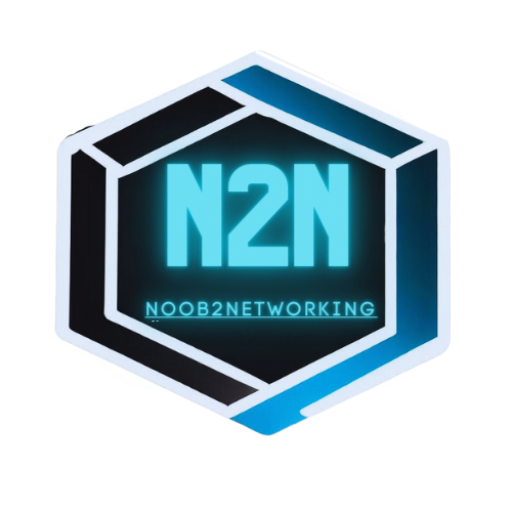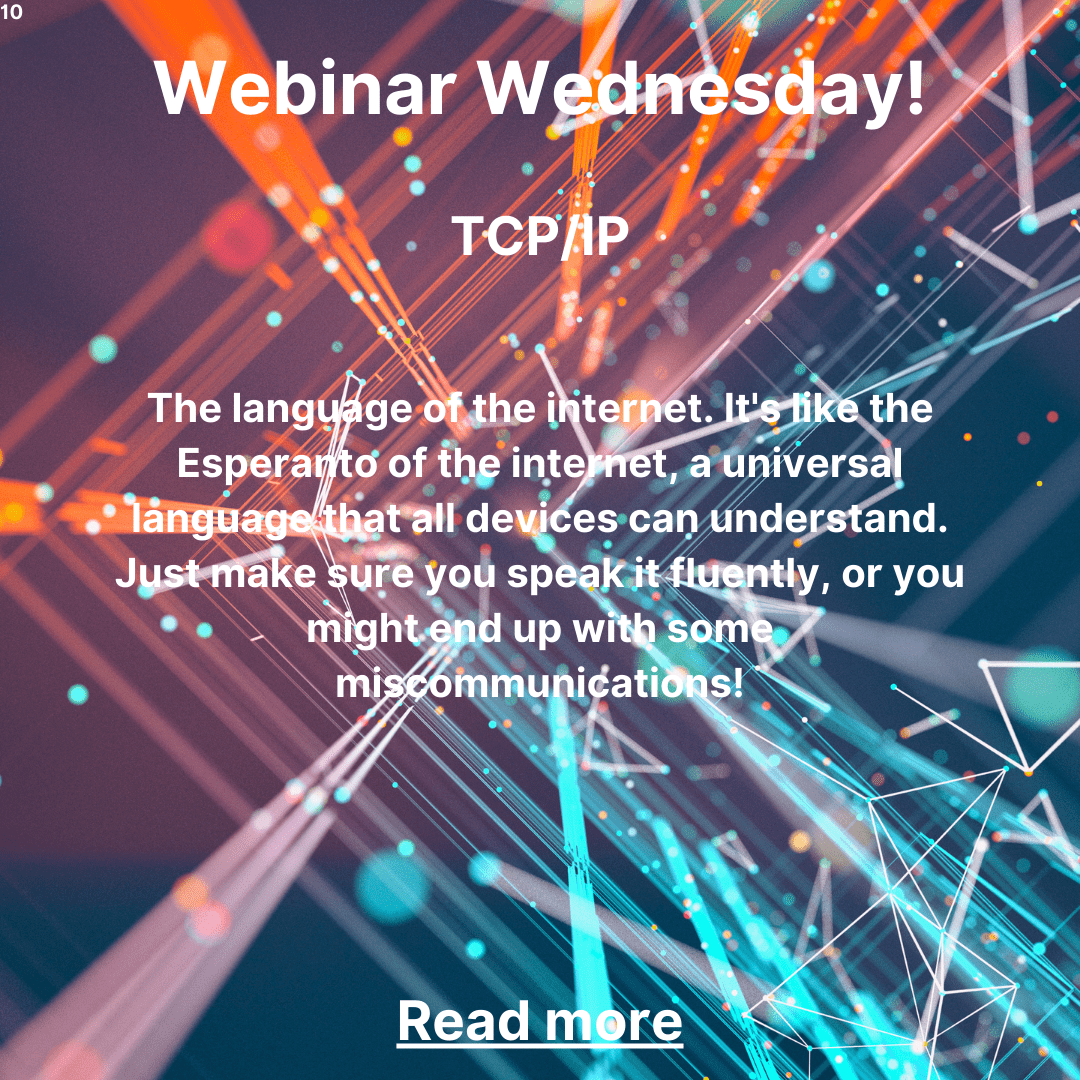“TCP/IP is that it was originally developed in the 1970s by a team of researchers at the U.S. Department of Defense. It was created as a way for different computer systems to communicate with each other over a network, and it has since become the most widely used protocol suite in the world.”
Hello and welcome to another episode of Webinar Wednesday, where we explore the fascinating world of computer networking and learn how to communicate with machines. Today, we are going to talk about TCP/IP, the most widely used protocol suite on the internet. TCP/IP stands for Transmission Control Protocol/Internet Protocol, and it is a set of rules and procedures that enable computers to exchange data over a network. 🌐
But what does that mean exactly? How does TCP/IP work? And why should you care? Well, if you want to speak the language of the internet, you need to understand TCP/IP. It is like learning a foreign language: you need to know the grammar, the vocabulary, and the etiquette. TCP/IP is the language that computers use to talk to each other, and by learning it, you can communicate more effectively with them. 😊
Let’s start with some basics. TCP/IP is composed of two main protocols: TCP and IP. TCP stands for Transmission Control Protocol, and it is responsible for ensuring reliable and orderly delivery of data. IP stands for Internet Protocol, and it is responsible for addressing and routing data packets across the network. Together, they form a powerful duo that can handle any communication challenge. 💪
TCP is like a courier service that delivers your messages in a secure and timely manner. It breaks down your data into smaller pieces called segments, adds a header with some information such as source and destination port numbers, sequence and acknowledgement numbers, checksum, and control bits, and sends them over the network. The header helps TCP keep track of which segments belong to which message, which ones are missing or duplicated, and which ones are corrupted. TCP also uses a mechanism called a three-way handshake to establish a connection with the receiver before sending any data. This way, TCP ensures that both parties are ready and willing to communicate. 🤝
IP is like a postal service that assigns addresses to your messages and delivers them to the right destination. It adds another header with some information such as source and destination IP addresses, version number, length, identification, flags, fragment offset, time to live (TTL), protocol type, checksum, and options. The header helps IP identify each packet uniquely and route it through the network using routers or gateways. IP does not guarantee that the packets will arrive in order or at all; it just tries its best to deliver them as fast as possible. 🚀
Together, TCP and IP form a layered model of communication that abstracts away the complexity of the underlying network infrastructure. TCP/IP uses four layers: application layer, transport layer, internet layer, and network access layer. The application layer contains various protocols that provide specific services to applications such as web browsing (HTTP), file transfer (FTP), email (SMTP), etc. The transport layer contains TCP and UDP (User Datagram Protocol), which provide different types of communication services such as reliable or unreliable, connection-oriented or connectionless, etc. The internet layer contains IP and other protocols such as ICMP (Internet Control Message Protocol), which provide error reporting and diagnostic functions. The network access layer contains various protocols that deal with the physical transmission of data over different types of media such as Ethernet, Wi-Fi, etc.
By using this layered model, TCP/IP enables interoperability between different types of devices and networks. It also allows flexibility and scalability in developing new applications and protocols without affecting the existing ones. TCP/IP is the foundation of the internet as we know it today, and it is constantly evolving to meet new challenges and demands.


2 responses to “Webinar Wednesday: Unraveling the Mysteries of TCP/IP – Speak the Language of the Internet!”
Downloaded the 677betapp. It’s alright, pretty convenient to have on your phone. I’ve seen worse! Take advantage of the app experience at 677betapp
Mexbox, not bad! I like the selection of games. Could be a bit faster, but overall a solid experience. I’m planning to spend some more time on this site. Give mexbox a shot, you might find something you like.